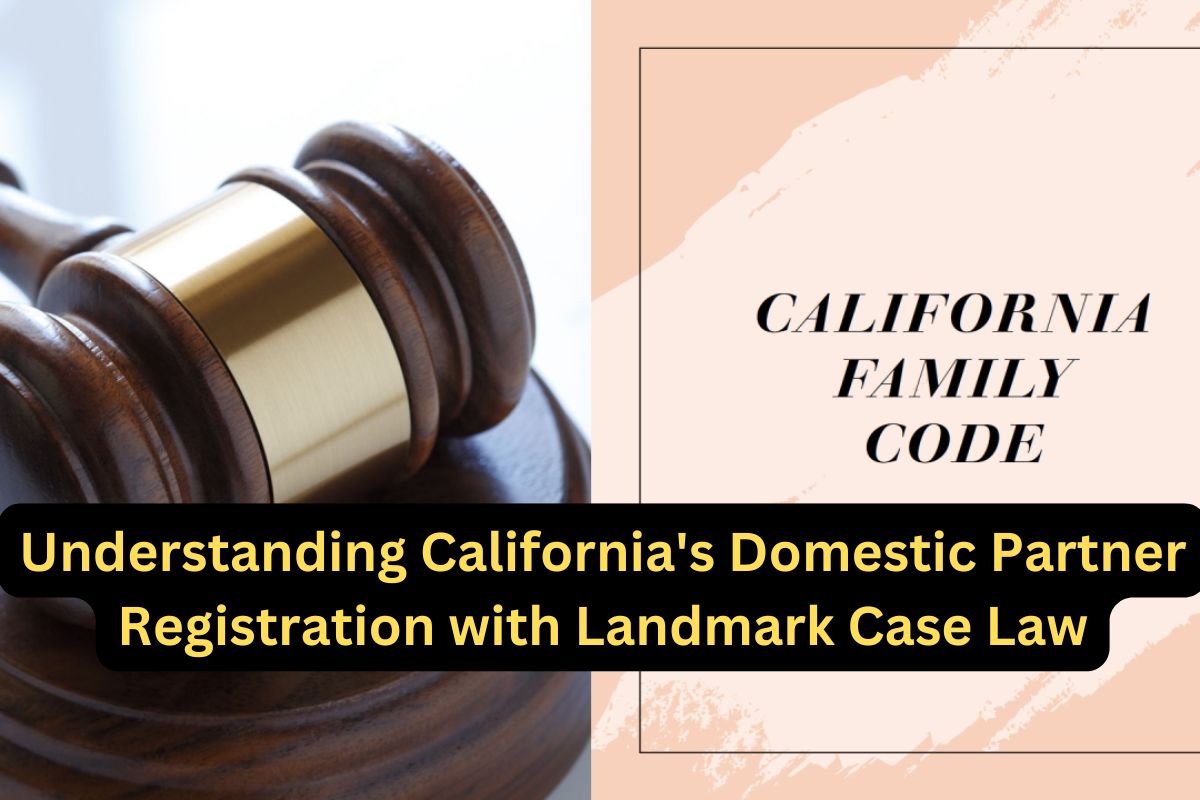Division 2.5: Domestic Partner Registration [297 – 299.6]
Overview
Division 2.5 of the California Family Code deals with the registration of domestic partnerships. This legislative framework provides legal recognition for couples who choose to live together in a committed relationship without marrying. The statutes within this division outline the rights and responsibilities of domestic partners, akin to those of married couples, and offer legal mechanisms for the dissolution of partnerships.
Key Provisions
Section 297: Definition and Requirements
California Family Code Section 297 defines a domestic partnership as a legal relationship established under the laws of California between two persons who meet specific requirements. The essential requirements include:
1. Both parties are at least 18 years old.
2. They are not currently married or in another domestic partnership.
3. They are not closely related by blood.
4. They have chosen to share a domestic life and are committed to one another.
This section outlines that domestic partners must file a Declaration of Domestic Partnership with the California Secretary of State to be officially recognized.
Also Read Oil Companies Accused of Violating California Law on Criminal Background Checks
Relevant Case Law:
– In re Marriage Cases (2008) 43 Cal.4th 757: This landmark case reinforced the right of same-sex couples to marry and provided context for domestic partnership laws. It underscored the evolving nature of relationship recognition, emphasizing that domestic partnerships were a step towards achieving equal rights.
Also Read New California Law Aiming to Protect LGBTQ+ Students Takes Effect
Section 298: Rights and Responsibilities
California Family Code Section 298 describes the rights and responsibilities of domestic partners. These rights are largely analogous to those of married couples and include:
1. Community Property Rights: Domestic partners have equal rights to property acquired during the partnership.
2. Spousal Support: Partners are entitled to seek spousal support in the event of a breakup.
3. Inheritance Rights: Domestic partners are afforded the same inheritance rights as spouses under intestate succession laws.
Also Read Los Angeles Prosecutor Sues District Attorney Over Handling of High-Profile Sexual Assault Case
Relevant Case Law:
– Kopp v. Kopp (2009) 179 Cal.App.4th 868: The court affirmed that domestic partners are entitled to the same property division rights as married couples, reinforcing the equality of treatment in the division of community property.
Section 299: Dissolution of Domestic Partnerships
California Family Code Section 299 provides the process for dissolving a domestic partnership. The dissolution process is similar to divorce proceedings and involves:
1. Filing a Petition: Partners must file a petition for dissolution or legal separation.
2. Division of Property: Community property must be divided equitably.
3. Support and Custody Issues: Similar to divorce, issues regarding spousal support and child custody may be addressed.
Relevant Case Law:
– In re Marriage of McCormick (1991) 231 Cal.App.3d 863: Although focused on marriage, this case provides insight into how courts handle the division of property and support, principles that are applicable to the dissolution of domestic partnerships.
Section 299.6: Registration and Public Records
California Family Code Section 299.6 governs the registration and maintenance of domestic partnership records. It ensures that the details of registered domestic partnerships are accessible through public records, providing transparency and legal clarity.
Relevant Case Law:
– People v. Valencia (2013) 214 Cal.App.4th 1421: This case dealt with the accessibility of public records, affirming the importance of maintaining accurate and accessible records for legal and public scrutiny.
Practical Considerations
– Legal Equality: Domestic partnerships in California are designed to provide legal parity with marriage, ensuring that partners enjoy similar rights and obligations.
– Filing Procedures: Proper registration and adherence to procedural requirements are crucial for establishing and maintaining legal recognition.
– Dissolution: The process for dissolving a domestic partnership mirrors divorce proceedings, emphasizing the need for clear legal guidance during separation.
Conclusion
Division 2.5 of the California Family Code offers a comprehensive legal framework for domestic partnerships, reflecting a commitment to equality and fairness. Understanding these provisions is essential for both partners and legal professionals navigating the landscape of domestic partnerships. The relevant case law further illustrates the practical application of these statutes, ensuring that the rights and responsibilities of domestic partners are clearly defined and upheld.

